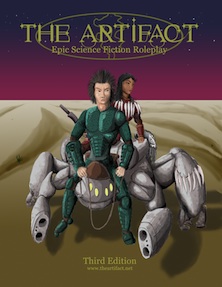If you’re a player familiar to the D20 system, you probably know about a (as far as I’ve heard) rule that allows you to skip a roll and take a 10 for a skill check or attack roll. I’m only just realizing that the same thing could work for 4e. You could do the same thing in 3e by taking a 50.
The effect is a little different because The Artifact has a roll under system. The target numbers never change. That means that a player that takes a 10 will get consistent results every time… mostly.
The reason why I’m comfortable with this idea is most attributes that you’d roll against are under 10. If you have an attribute over 10, you can consistently get a single success on that attribute but you’re never going to get more successes until you get to an attribute of 20. If you have an attribute that high, you can’t easily fail anyway. In all respects you’re essentially taking a mediocre result.
I do want to take the concept further though. You can take a 10 and then take stress to reduce the roll. So if this was an important roll and you had an attribute of 8, you could take 10 and two stress to guarantee the roll. You’re still taking a consequence and that seems fine to me.
Let’s keep pushing though. 4e is all about economies and one of the biggest economies I’ve been messing with is the action economy. I think it wouldn’t break much if 4e let you spend two actions (total) and take a 5. You could also take stress with that to bring the value down further.
But
Boosts and Drains still apply. A Drain could eliminate a success you got from taking a ten and a Boost can still help.
Taking a 10 or a 5 when you have Boosts and Drains means you’d just skip the d20 and roll your d10s.
I’m curious how often this option would be used. I think it’s going to be welcome to some players that constantly roll poorly but even then it would have limited utility. In high attribute characters it would become routine to take a 10 when a task has minor requirements to complete. That’s okay though.


 The Free RPG Blog
The Free RPG Blog